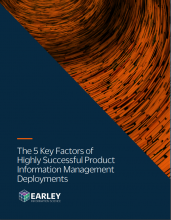 Online marketplaces, social media, mobile technologies and new shopper journeys have transformed the way that buyers make purchase decisions for products. In a digital world, it’s vital that companies provide innovative, synergistic ways for customers to experience products across touch points. Seismic shifts in customer engagement have escalated the importance of rich product information to attract and retain customers, facilitate product assortment growth, achieve differentiation and consistency across channels, and optimize the supply chain. As a result, the demand for multi-domain Master Data Management (MDM) and Product Information Management (PIM) solutions is on the rise.
Online marketplaces, social media, mobile technologies and new shopper journeys have transformed the way that buyers make purchase decisions for products. In a digital world, it’s vital that companies provide innovative, synergistic ways for customers to experience products across touch points. Seismic shifts in customer engagement have escalated the importance of rich product information to attract and retain customers, facilitate product assortment growth, achieve differentiation and consistency across channels, and optimize the supply chain. As a result, the demand for multi-domain Master Data Management (MDM) and Product Information Management (PIM) solutions is on the rise.

